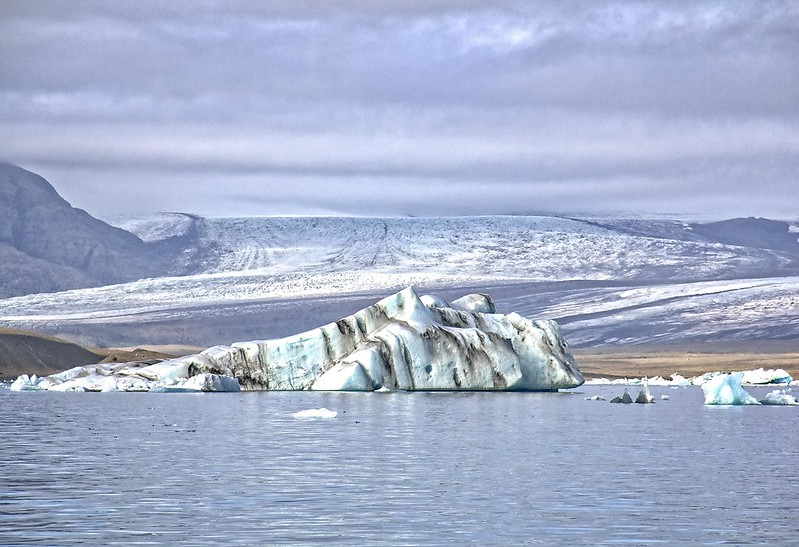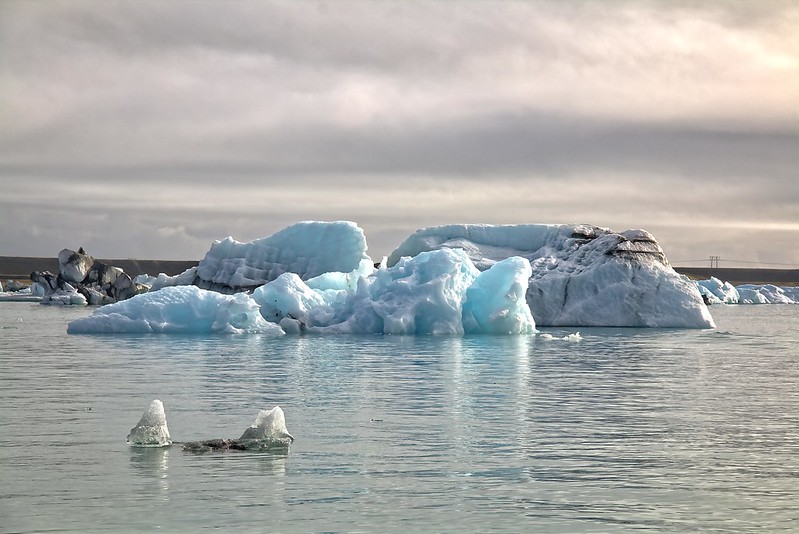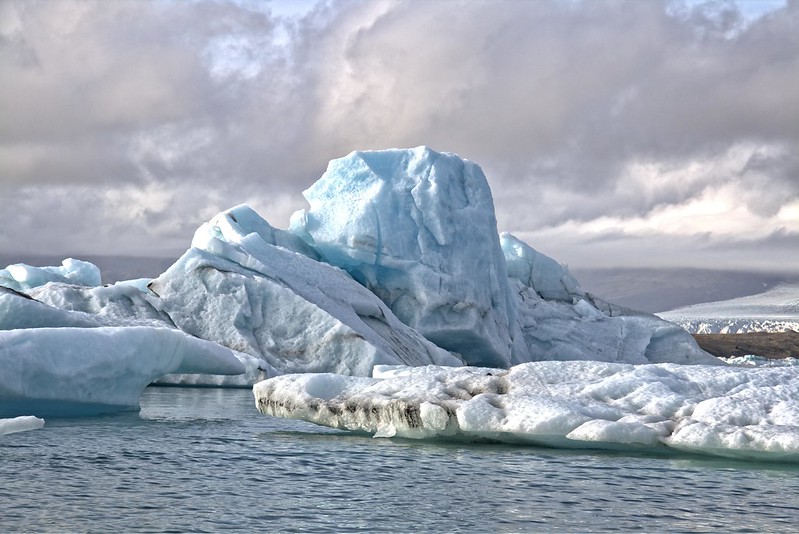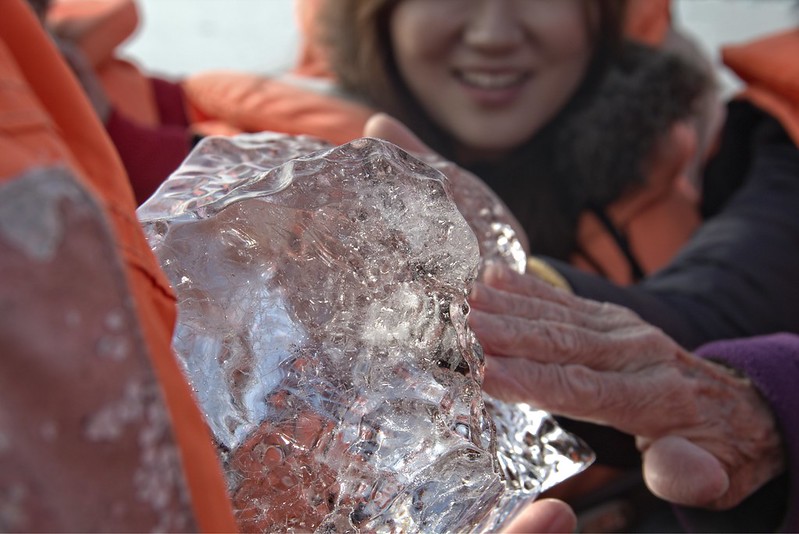
Glaciers calve icebergs into the lake, where they float for about five years. The freshest ice is brilliant robin's egg blue, while older ice that has been floating around a while turns white. The black streaks are rock and volcanic ash carried down from the mountains.



The icebergs are all different sizes and I found them all spectacular.


This chunk of ice is crystal clear. After about 10,000 years as part of a glacier, the pressure squeezed out all air bubbles.

Looking head-on at Vatnajökull glacier.

As the icebergs melt, they get small enough to float down the outlet river to the ocean.

And this is where they die, like frozen jellyfish on the beach.

See many more Iceland photos on my Flickr page.
Previously:
Iceland: Part 3 - volcanic sculptures
Iceland: Part 2 - enchanted landscapes
Iceland: Part 1 - where rainbows begin and end
No comments:
Post a Comment